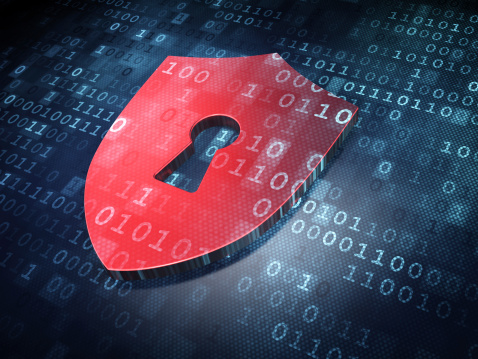Why hackers are thriving in a connected world
How to fight back

If you were ever in any doubt about how much the internet now dominates our lives, the pandemic sweeping the world will have shattered those reservations. Being forced to work from home means that we have been denied our freedom to spend time with family, friends and work colleagues. The internet-enabled connectivity available to 59% of the global population has been invaluable in recent weeks. (And proves that equitable access to internet connectivity should be a priority for the world. But that’s a topic for another time.)
Emmanuel Schalit is the CEO at Dashlane.
As we adapt our lives to ‘social distancing’, increasing numbers of people are relying on the internet to speak with and see loved ones, whether through a laptop, tablet or specialist smart device from the likes of Amazon, Google and Facebook. Our working lives have also changed. Video conferencing apps are thriving, with one of the most popular—Zoom—went from around 10m users a day to December to 200m daily meeting participants in March.
Online services
And it’s not all about communication. According to a survey by EY, many households are trying online services for the first time. While the poll of UK consumers revealed a 18% increase in video calling, both online shopping and watching catch-up TV has increased by 9%—the demand for digital connectivity and content is changing in the wake of Covid-19.
The surge in demand for internet use has been met with caution by some security experts, with warnings that the global pandemic has not dissuaded cyber criminals from preying on the vulnerable. Coronavirus-themed attacks now dominate scam emails, according to Proofpoint. As of 27 March, it had seen 500,000 messages, 300,000 malicious URLs, and 200,000 malicious attachments with coronavirus themes.
Phishing
From a consumer perspective, phishing scams are rampant in these sorts of situations, preying on people’s fears and distraction. There have been reports of false emails claiming to be from ‘The Centers for Disease Control and Prevention’ and ‘The World Health Organization’ about the coronavirus outbreak. Hackers use these scams to deliver malware, steal bank details and access other accounts.
So how can we protect ourselves from becoming a victim? We know the answer to building a better digital world is empowering people to take back control of our own digital identities, allowing us to keep our personal data in our own hands and no one else's. Only then will we be able to live in a safe digital world, and once again use the internet for good, in the way that was intended.
The importance of passwords
One of the easiest yet most neglected ways we can protect ourselves is through reviewing the strength of the passwords we use. It is vital to have a unique password for every account, ensuring that even if one account is breached your other accounts will be secure. We’ve found that the average user has over 150 digital accounts, so it’s impossible to remember every password for each service you use. Password managers such as Dashlane do this job for you.
Are you a pro? Subscribe to our newsletter
Sign up to the TechRadar Pro newsletter to get all the top news, opinion, features and guidance your business needs to succeed!
Make sure all your passwords are strong. The ideal password is one that is a unique and random string of letters and numbers of sufficient length and complexity to resist easy, automated ‘brute force’ attacks. Again, this is where password managers are critical, as they can quickly generate strong and secure passwords for all of your individual accounts. Furthermore, you should change your passwords regularly, as breaches often go undetected for months, sometimes years, so you never know when your account might have been exposed.
This can be done manually or automatically depending on the features of your password manager, and makes it extremely easy to ensure that your accounts are always being safeguarded against unknown threats. Here’s a few other tips to instantly improve your online security:
1. Update your web browser and operating system
If you haven’t updated your favorite browser lately, not only is it probably running slowly but you could be vulnerable to a host of security threats, including viruses, malware, spyware, and many other issues. Boost your browser’s performance and security by taking a few minutes to install the latest update.
And do the same for your mobile device, laptop, or desktop’s operating system. This isn’t as disruptive as it was in the past, and usually takes less than an hour every couple of months. (You can do it right before bed and wake up to a freshly updated machine.)
2. Sign up for online banking notifications
Contrary to popular belief, not all identity thieves will go on an exorbitant shopping spree. Commonly, they’ll make small purchases on credit or withdraw small amounts over a short period of time to avoid tipping off a bank. Online banking alerts are a great way to keep an eye on the activity in your banking account without a ton of effort. Mobile online banking apps usually have alerts that will notify you of any suspicious activity.
Just stay vigilant when seeing any alert emails from your bank so you don’t accidentally fall for a dopplerganger. If you get an alert via email, simply go to your web browser and type in your bank website’s URL or log in through your bank’s mobile app; in almost every case, there is a “messages” section that will have the same information as the email. Don’t click any link from an email you weren’t expecting. (Even if you’ve signed up for alerts.)
3. Check your credit score
It may not be on the top of your to-do list, but take a second to check your credit score. Along with setting up online banking alerts, regularly checking your credit score will help you understand your credit health and monitor that you haven’t become a victim of identity theft. Look for new accounts that you haven’t opened, unknown names and other out-of-place information. These can obviously negatively affect your credit, but they can also be an early warning of compromised accounts.
4. Enable two-factor authentication on one account
Add an extra layer of security to your online accounts by enabling two-factor authentication (2FA). 2FA is a feature that adds an additional “factor” to your normal login procedure to verify your identity, using two of three possible identifiers: something you know (your password, PIN number, zip code, etc.) something you are (via facial recognition, your fingerprints, retina scans, etc.), or something you have (a smart card, your smartphone, etc.).
Biometric or 2FA apps like Duo tend to be more secure than 2FA that simply texts your phone, simply because it’s easier for a malefactor to intercept a text message than to gain physical access to your mobile devices.
5. Take a breath
Keeping up healthy levels of wariness around your personal security is prudent—and a little exhausting. But like any sort of hygiene, digital hygiene isn’t usually about one big choice, but educating yourself about best practices and helpful tools that can carry some of the load. If it helps, remember that each little moment you stay vigilant is saving you much more stress and time in the future if it can help you avoid being hacked.
And if you find yourself questioning an unexpected email or being wary of a suspicious text message, don’t feel like you have to figure it out right in the moment. Take a step back, consider what the safest reaction should be, and investigate when you have a clear mind.
In summary
There’s a lot more confusion in the world right now, and that’s what bad actors are counting on. Fortunately, there are many honorable and helpful people and resources available. Don’t be shy about seeking a second opinion or asking for help, from problem-solving companies like ours or trusted media outlets.
- We've featured the best cloud antivirus.
